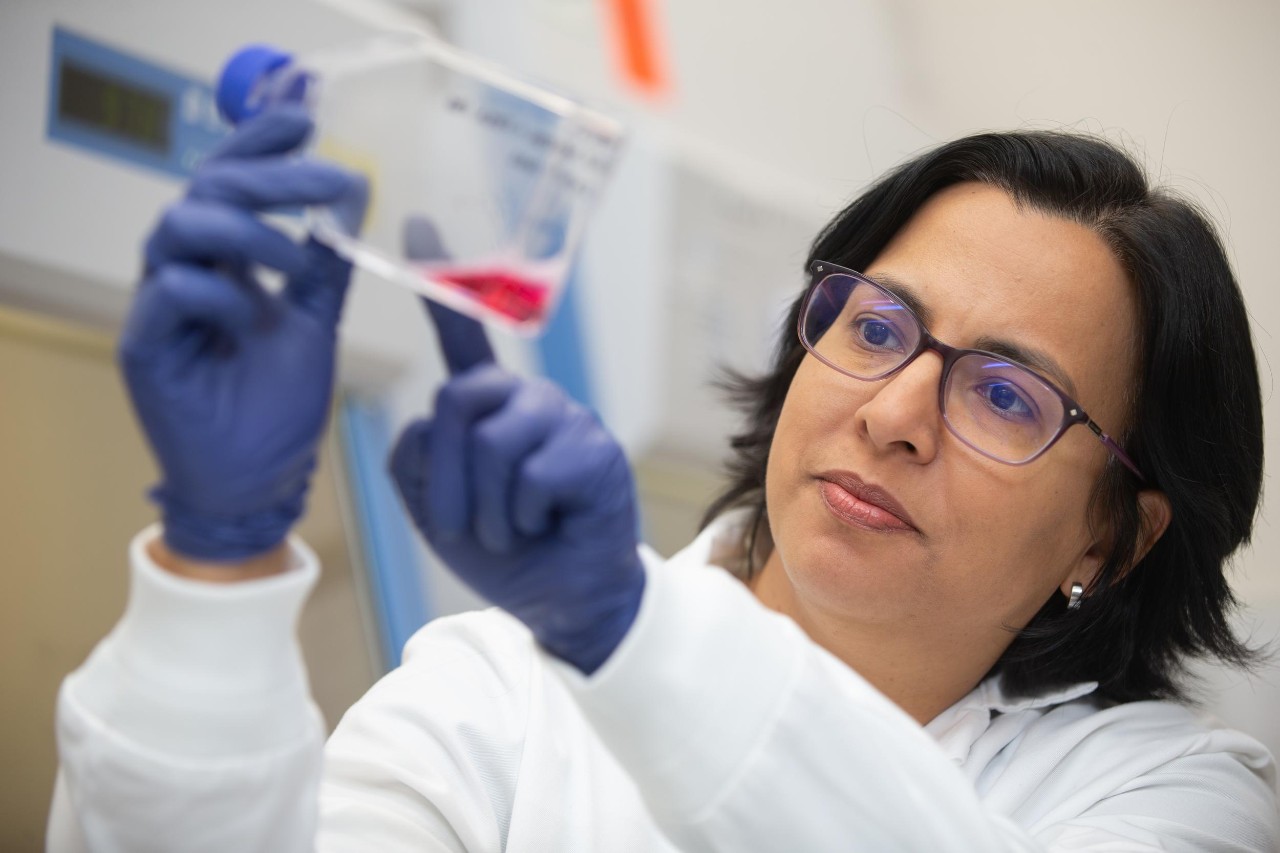
UC insights could lead to treatments for insect-borne illness
Chagas disease affects 8 million people
Almost everything about insects called kissing bugs is revolting, from the insidious way they bite people’s faces at night to drink their blood while they sleep to the way they spread disease through their poop.
Some carry a parasite called Trypanosoma cruzi that causes Chagas disease, a leading cause of disability and premature death in the Americas. Left untreated, Chagas disease can cause serious heart and digestive problems. It’s showing up more and more in patients in the United States.
Now researchers at the University of Cincinnati are investigating what makes the parasite so resilient.
UC researchers are studying the signaling pathway that leads the parasite to transform and reproduce. They follow that pathway from the beginning when an uninfected kissing bug acquires the parasite by biting an infected mammal host all the way to the time the parasite develops in the insect’s gut to be spread to people or animals through the bug’s poop.
The study was published in the journal mBio.
“The best way of treating the disease is understanding the biology of the parasite so we can find better drugs to kill the parasite before it’s too late for the patient,” said Noelia Lander, an assistant professor of biological sciences in UC’s College of Arts and Sciences.

UC Associate Professor Miguel Chiurillo is lead author of a new study examining ways to interrupt the lifecycle of the parasite responsible for Chagas disease. Photo/Andrew Higley/UC Marketing + Brand
Interrupting parasite's lifecycle
In her molecular parasitology lab at UC, Lander and her research team examined the ways T. cruzi survives in different hostile environments. They deployed technology such as the gene-editing tool CRISPR/Cas9, immunofluorescence analysis and electron microscopy for the study.
“During its lifecycle, the parasite encounters changes in acidity, temperature, nutrient availability and other conditions. It needs to survive somehow. So what we studied is how the parasite senses those microenvironmental changes and triggers reactions to transform,” Lander said.
If we can prevent the parasite from transforming, we can kill it and also stop the transmission of disease.
Noelia Lander, UC Assistant Professor of Biology
Researchers found that certain proteins play important roles in different developmental stages of the parasite. Among their functions, they help the parasite recover cell volume in the hyperosmotic environment of bug poop.
They also discovered two regions within the cell where an important “messenger molecule” called cyclic adenosine monophosphate, or cAMP, is responsible for the parasite’s life cycle transformations in response to environmental stress.
“The idea is to better understand the biology of this parasite to find out which proteins in the cell are good targets for drug treatment,” she said. “If we can prevent the parasite from transforming, we can kill it and also stop the transmission of disease.”

UC graduate student Joshua Carlson works in Assistant Professor Noelia Lander's molecular parasitology lab. Photo/Andrew Higley/UC Marketing + Brand
'Silent disease' affects millions
The stakes are high, she said.
“The disease affects as many as 8 million people in rural areas of Latin America,” Lander said. “It’s called a ‘silent disease.’ Most people who are infected by it don’t know.”
But years or even decades later, Chagas disease can cause debilitating heart disease, lead author and UC Associate Professor Miguel Chiurillo said.
“It’s a chronic disease that mainly affects poor people in these countries with no access to treatment,” Chiurillo said.
Kissing bugs are often found in older or poorly constructed homes. Sometimes they live in thatched roofs.
“Our research is mainly trying to discover new drug targets in the parasite and validate them to develop alternative strategies to control the disease,” Chiurillo said.

UC Assistant Professor Noelia Lander and her research team are studying insect-borne illness in her molecular parasitology lab. Photo/Andrew Higley/UC Marketing + Brand
Co-author and graduate student Joshua Carlson said too few people in the United States are aware of Chagas disease.
“A lot of people have never heard of it,” Carlson said. “But hundreds of thousands of people in the United States have it. So getting educated about what the disease is and how it can be transmitted is important, especially if you plan to travel to countries where it’s endemic.”
Carlson came to UC to work in Lander’s lab after earning a bachelor’s degree from Ohio State University.
“I’m looking at physician-assistant positions after graduating. Having this research background and teaching experiences during my graduate degree, I’m hoping to go into a clinical educator role,” Carlson said.
UC biology graduate Aqsa Raja also was a co-author of the study. She participated in the research through a UC program called UPRISE that offers STEM research opportunities to undergraduates from underrepresented groups.
The study was supported by grants from the National Institutes of Health.
Featured image at top: UC Assistant Professor Noelia Lander studies insect-borne illness in her lab. Photo/Andrew Higley/UC Marketing + Brand

Assistant Professor Noelia Lander studies ways to improve human health in her molecular parasitology lab. Photo/Andrew Higley/UC Marketing + Brand
Impact Lives Here
The University of Cincinnati is leading public urban universities into a new era of innovation and impact. Our faculty, staff and students are saving lives, changing outcomes and bending the future in our city's direction. Next Lives Here.
Related Stories
Ancient Maya used sustainable farming, forestry for millennia
June 24, 2022
University of Cincinnati researchers found evidence of sustainable agriculture and forestry spanning a millennia in one ancient Mayan city.
How to make the faculty job search less discouraging
May 5, 2023
Postdoctoral researchers often get little useful feedback about ways to improve their job applications for faculty positions. So a University of Cincinnati anthropologist set up a pilot program that invited postdoctoral researchers to review each others’ application documents.
Psychedelics may help people reinvent themselves
February 24, 2023
Psychedelics might help people change unwanted behaviors by helping them reinvent their perceptions of themselves, according to new research by the University of Cincinnati.
